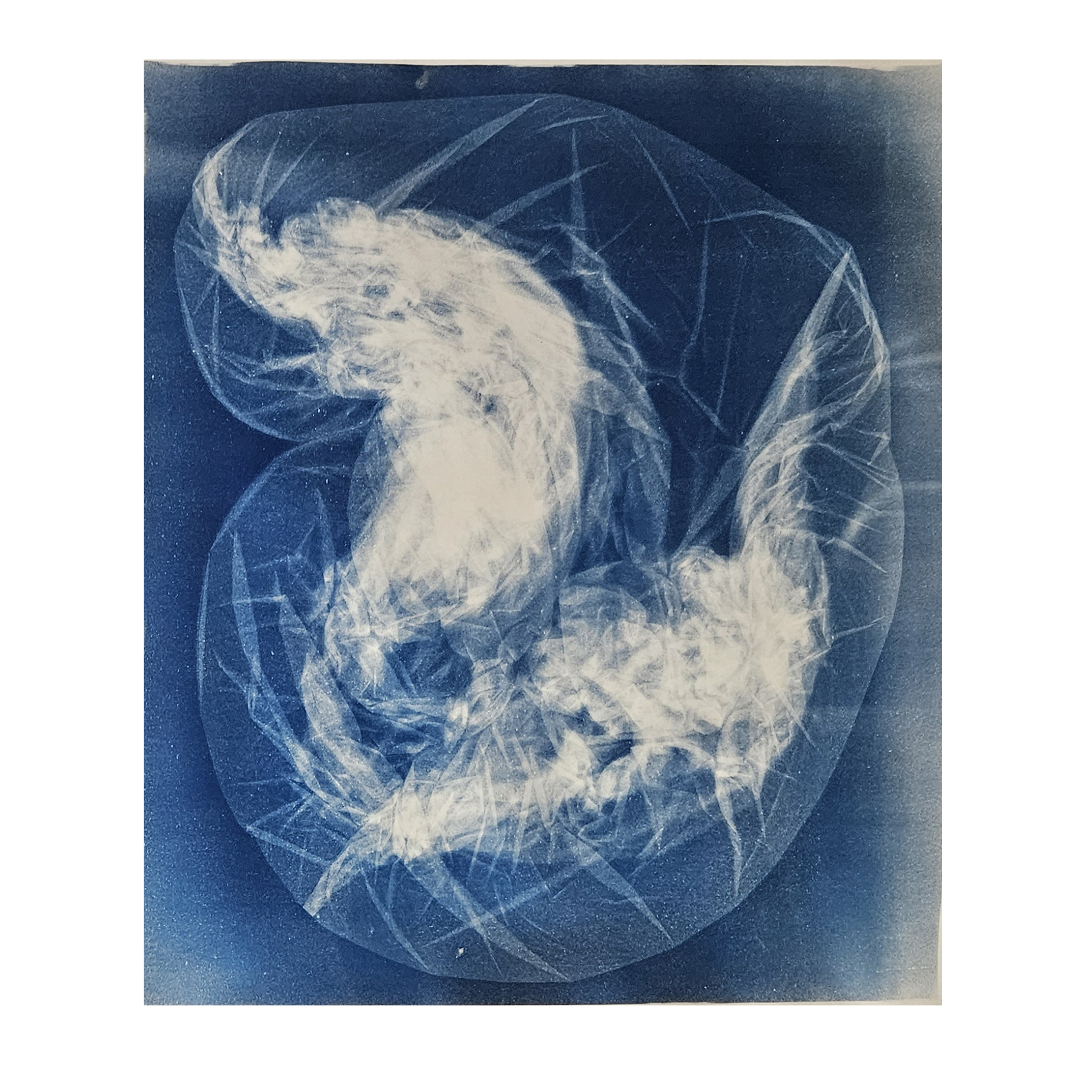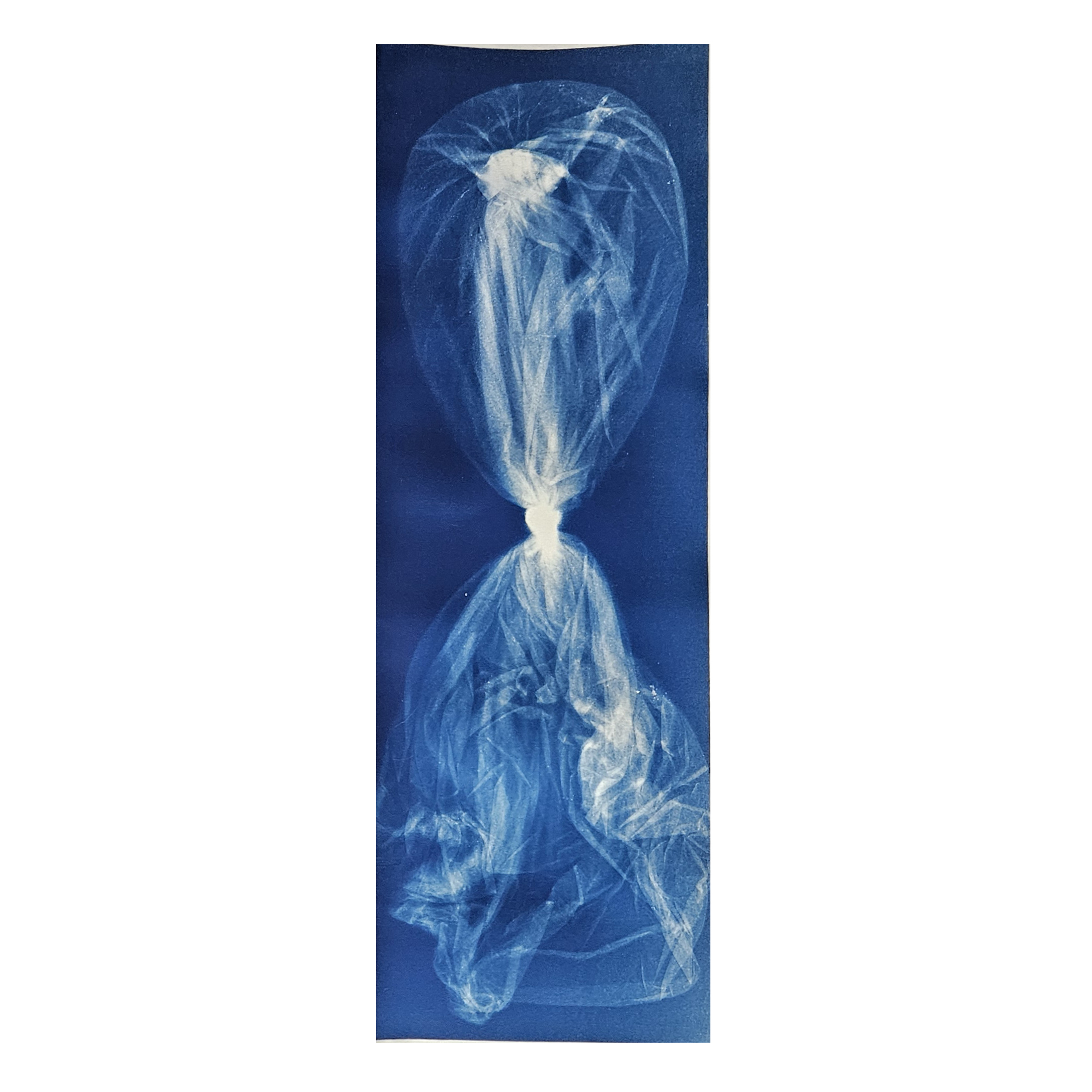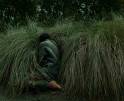Earth Month Photographers on Photographers: Sarah Knobel in Conversation with Jamie House
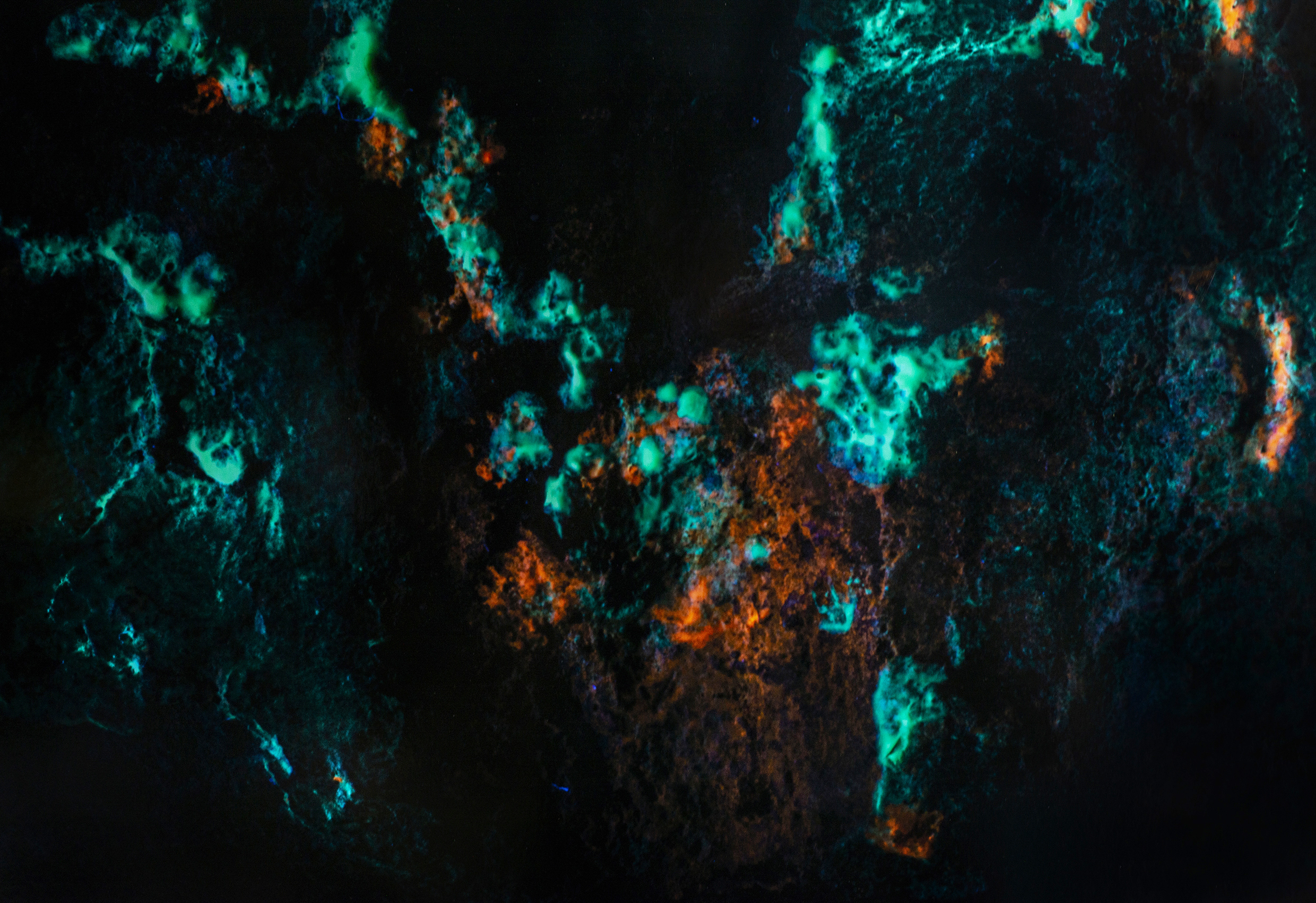
©Jamie House, Rock fluorescing with radiation at South Terras taken with a UV torch at night, Rn86 Radiological Spectres: Speculative Field Studies in the Mines of South Terras SSSI, 2022
In expanding our celebration of Earth Week, Earth Month: Photographers on Photographers will focus on the work of Eco.Echo Art Collective, a group of international artists deeply concerned with the well-being of our planet beyond human needs. The group’s concerns are climate change and anthropogenic activities’ global impact. Driven by an appreciation for the natural world’s beauty, diversity, and wonder, they believe in the inherent worth of all living beings regardless of their instrumental utility in fulfilling human desires. This week, members of Eco.Echo Art Collective will take time to reflect on each other’s work and how the transformative potential of photography can engage in challenging conversation and affect social change around ideas of humans and our surroundings.
Today, member Sarah Knobel will share her discussions with member Jamie House.
Jamie House’s photography project, Rn86 Radiological Spectres: Speculative Field Studies in the Mines of South Terras SSSI, intertwines scientific inquiry, artistic expression, and environmental awareness. South Terras is the backdrop for House’s series. Originally a hub for iron, uranium, and radium production from 1870 to 1930, the site witnessed the ebb and flow of industrial activity, leaving behind a legacy that reverberates through time. Following its closure in the early 1930s, South Terras Cornwall UK transformed, evolving into a haven for rare minerals and earning the Site of Special Scientific Interest (SSSI) designation. Yet, beneath the surface of this seemingly tranquil landscape lies a complex narrative of environmental degradation and the lingering specter of radioactive contamination.
House’s Rn86 Radiological Spectres: Speculative Field Studies in the Mines of South Terras SSSI uses multi-sensory technological observation methods and photography—working across a range of expansive posthuman methods—to explore this location. House’s goal is to transcend traditional boundaries and normative research practices to explore human and more than human relationships with nature on a deeper level. At the core of his exploration lies a deep earthly time, a paradigm that challenges conventional notions of temporality and invites contemplation on the interconnectedness between humans and the earth surrounding us.
Below is a conversation between photographer Sarah Knobel and Jamie House that discusses Jamie’s methodology and conceptual purposes behind his work.
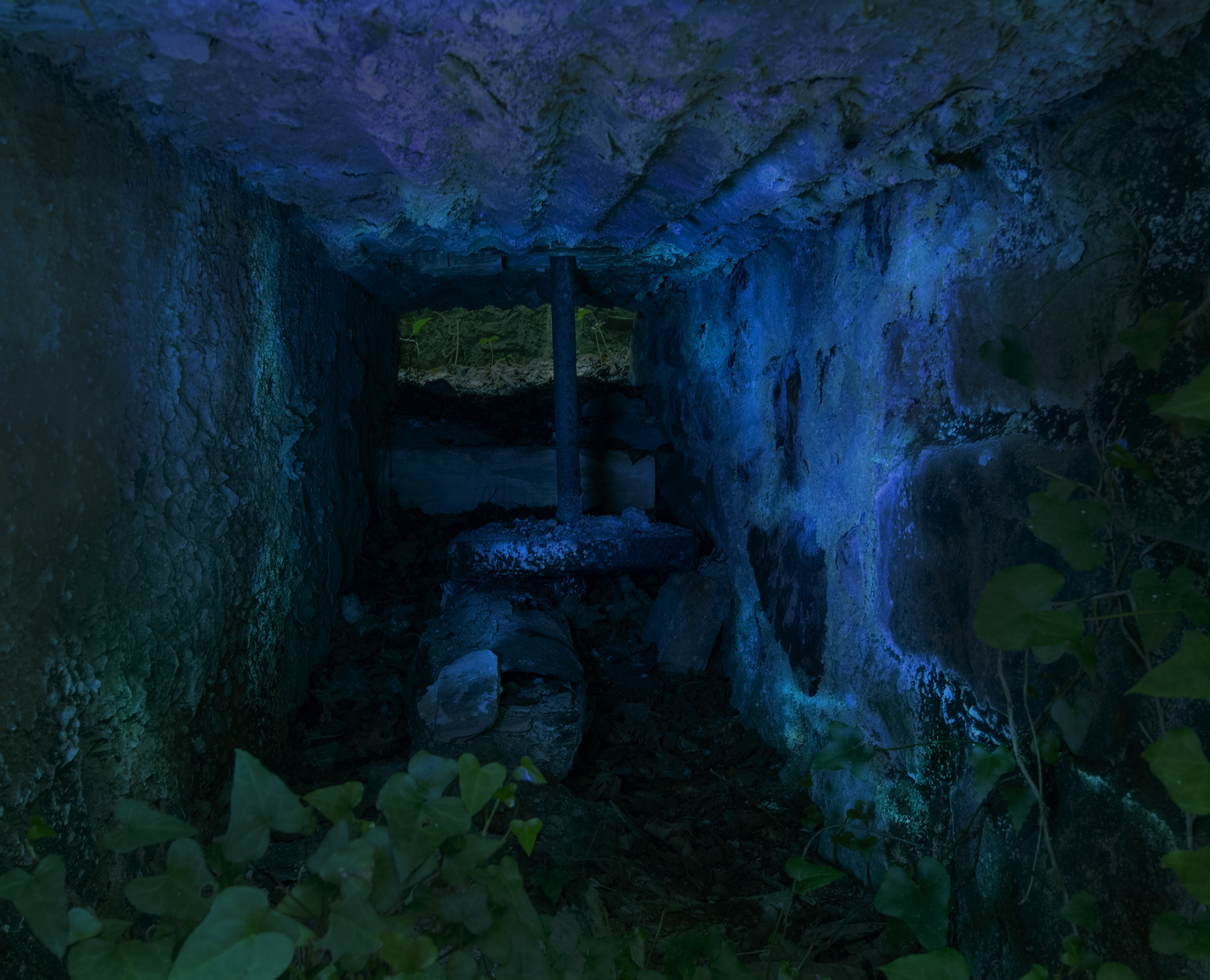
© Jamie House, Searching for radiation at South Terras at night with UV light, Rn86 Radiological Spectres: Speculative Field Studies in the Mines of South Terras SSSI, 2022
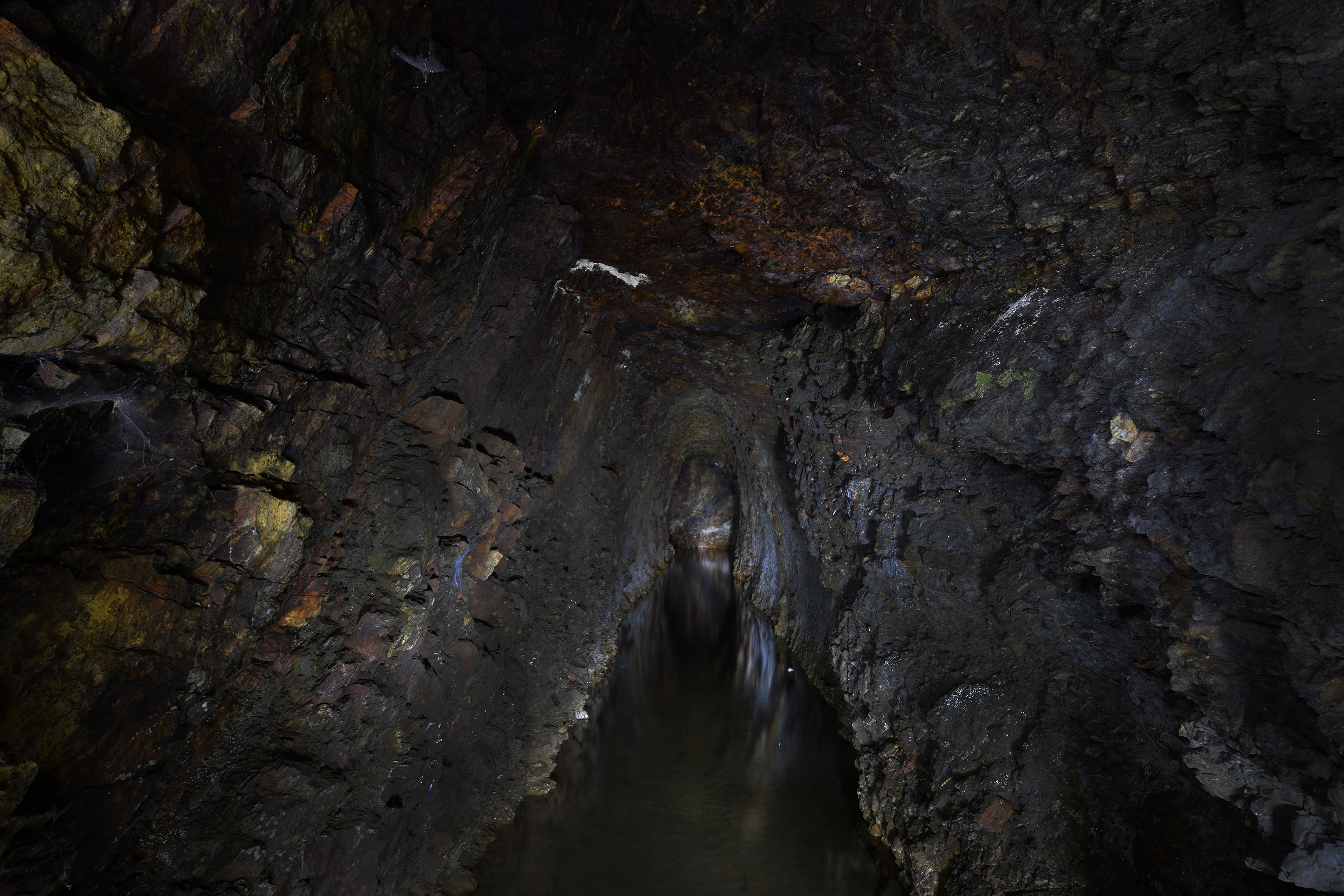
©Jamie House, First site visit of underground uranium mine showing layers of copper and uranium as visuals traces of the extractive mining history trapped in the fissures and strata of the rock, Rn86 Radiological Spectres: Speculative Field Studies in the Mines of South Terras SSSI, 2022
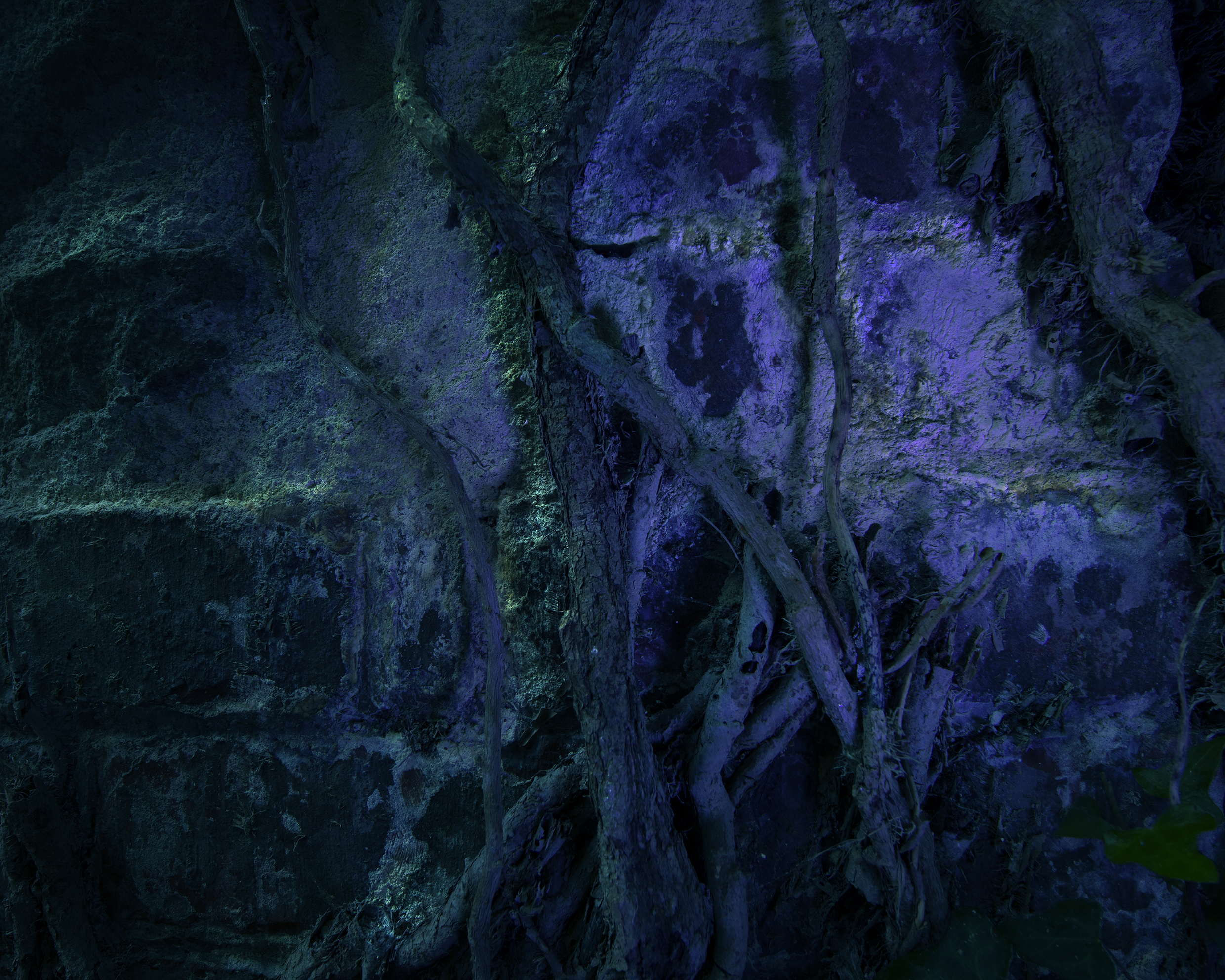
©Jamie House, Image of main cooling tower at south terras photographed with a UV torch showing the fluorescence radiation,Rn86 Radiological Spectres: Speculative Field Studies in the Mines of South Terras SSSI, 2022
Sarah Knobel: Have you always considered photography in relation to other sensory experiences? Has it always been sound and photography?
Jamie House: Photography first, I started with learning about pinholes around twelve years old, but I’ve also always been interested in sound.
So, I started as a child with cassette players recording imaginary radio shows. Cassettes were temperamental, so I bought mini disc players and omnidirectional microphones to record the natural world around me. It’s always been about immersion in the natural world. I was always interested in listening to sounds and attempting to know what they mean to the broader ecosystem or listening for hours with my dad to short-wave radio stations and white noise, trying to find extraterrestrial voices in the ether. Over the last 20 years, I have honed my skills to extend my human perception in non ocular ways. Through durational and extended listening practices, I listen to barely audible sounds of, for example, moss rehydrating, absorbing the moisture from a fine vapor, using hydrophones put into soil soil horizons (also capturing the multitude of microscopic insects moving), listening to the inner landscape of a tree, or near vocal qualities of wind singing along telegraph pylon wires. Both my sonic and photographic skills enable me, through technological means, to get closer to more than human worlds.
Jamie’s research methods using field recordings and the latest software applications of granular synthesis, spatial audio, and extended electroacoustic/acousmatic compositions can be listened to here: https://soundcloud.com/jamiehouse
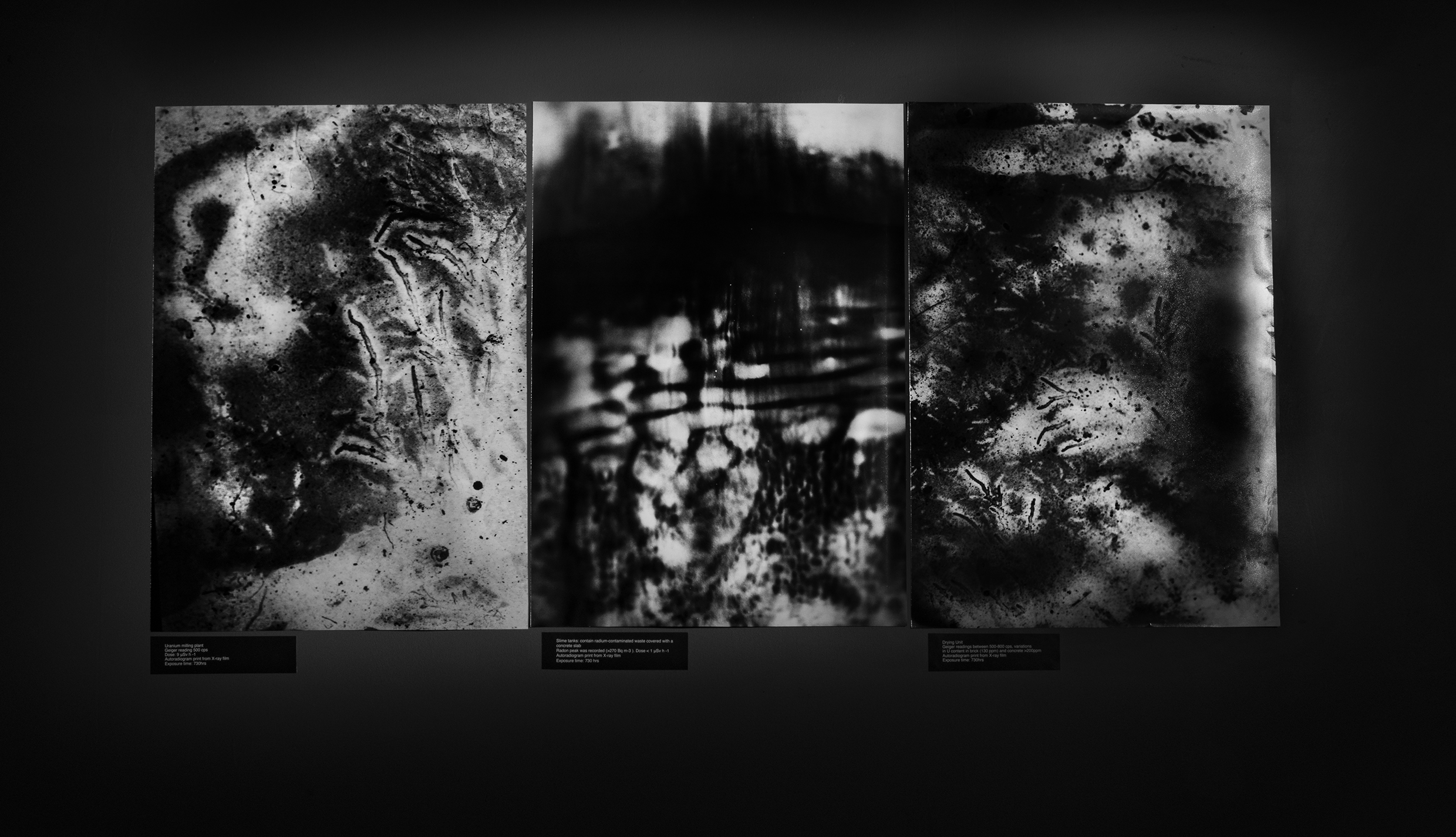
©Jamie House, Triptych Autoradiogram silver gelatin prints from x-ray film buried on site for 730 hrs,Rn86 Radiological Spectres: Speculative Field Studies in the Mines of South Terras SSSI, 2022

©Jamie House, Detail of Autoradiogram print, Rn86 Radiological Spectres: Speculative Field Studies in the Mines of South Terras SSSI, 2022 with text showing the amount and dosage of radiation and time the x ray emulsion was buried for
SK: I would love to know more about your process and how audio and imagery relate. How do you make choices with certain subjects? And specifically, how did your research in South Terras start?
JH: Sound becomes a crucial element when exploring more than human perspectives. This, for me, involves capturing the sounds of the more than human, such as animals,insects or natural elements, inaudible bat sonar calls, sub aquatic insect communication or electromagnetic frequencies only audible by specialist microphones. For me It’s about extending perception to listen to all beings on the electromagnetic spectrum beyond our limited human perception and integrating them into my photographic practice. With South Terras, I wanted to read the site from a non-anthropocentric point of view. I found other ways to sense and indicate the amount of naturally occurring radon and man-made radioactive materials onsite. First, I used the Geiger counter that sonically maps the site and areas of contamination. Then, I visited the site at night with a UV torch because I knew radioactive materials would be visible and fluoresce under black light. It was important to me to allow the rocks and geological processes to express themselves; I wanted to show the radioactive waves and their presence. To give the inanimate agency, I buried X-ray film underground using an autoradiogram, which is an image of X-ray film or nuclear emulsion produced by the pattern of decay emission from radioactive substances. I left the film for 730 hrs in the most radioactive spots of the sites, and let the radioactivity and organic matter that was entangled in black isotopes imprint and grow on the photographic film.The resulting images revealed invisible radiological traces deep into the future. The radioactive waves and soil biota produced the image rather than me as a photographer.

©Jamie House, Searching for uranium at night with UV torch, Rn86 Radiological Spectres: Speculative Field Studies in the Mines of South Terras SSSI, 2022
SK: It is a collaboration between you and the elements. Can you talk more about your posthuman photographic methods—what does this process look like? Your materials can change depending on what you are trying to portray. What materials do you use? How do you choose which method to use?
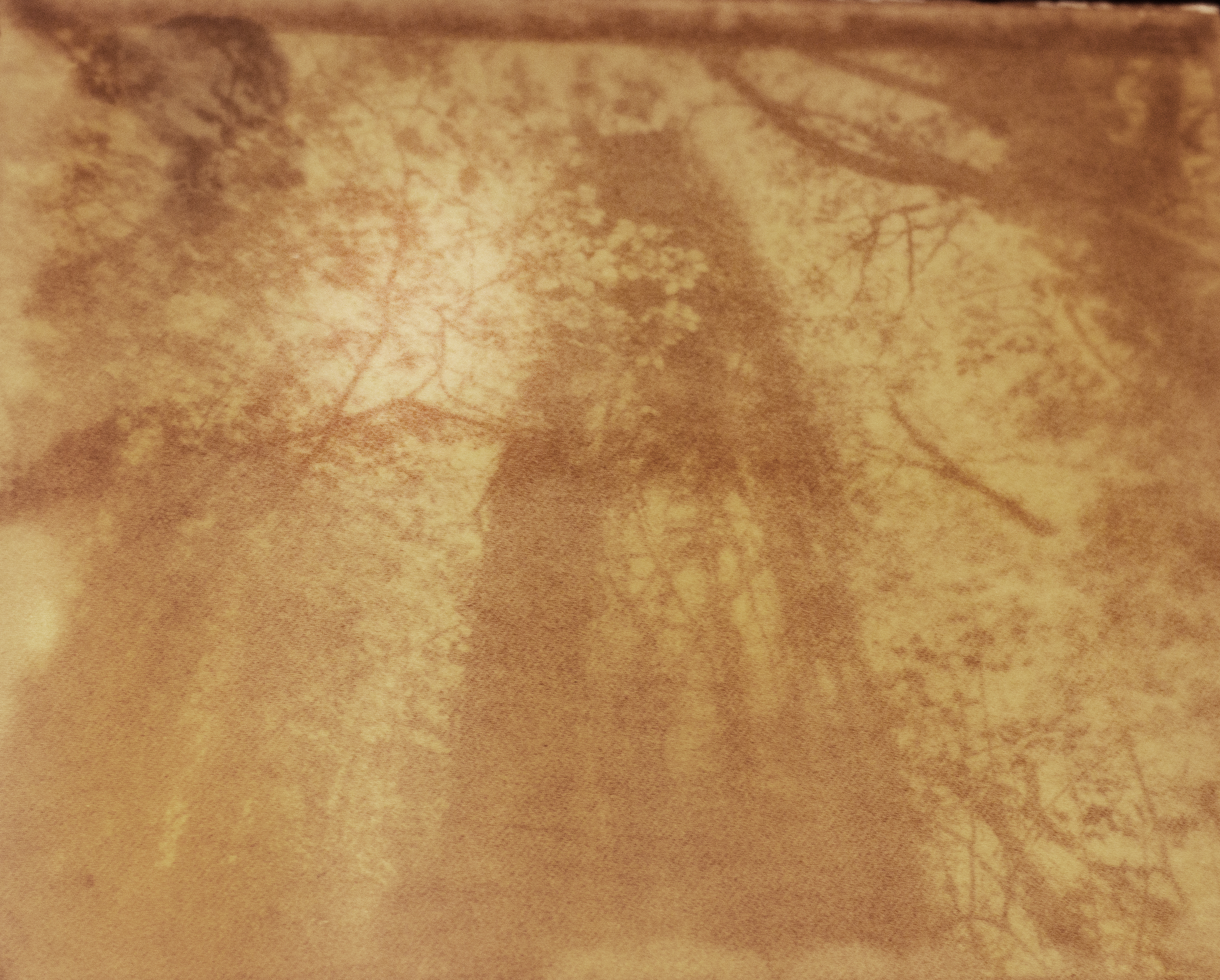
©Jamie House,the main cooling tower at South Terras mine., Rn86 Radiological Spectres: Speculative Field Studies in the Mines of South Terras SSSI, 2022 Uranotype (Uranium print, during the first half of the 19th century, many photosensitive metal salts had been identified as candidates for photographic processes, among them uranyl nitrate. The prints produced were alternately referred to as uranium prints, urbanities, or more commonly uranotypes. The first uranium printing processes were invented by a Scotsman, J. Charles Burnett, between 1855 and 1857.I managed to obtain uranynl nitrate from a local electron microscopy lab (they use it to stain microscope slides) the prints I made are slightly radioactive (and where made in strict lab conditions) , a property which serves as a means of non-destructively identifying them.
JH: I always ask what this means for photography and the wider ecosystem, thinking of it through a posthuman eco-critical lens. What is photography? Photosynthesis is similar to photography (for example – anthotypes that use plant emulsion and the reaction of light to make images or other eco-alternative photo processes). Daniel Rubinstein situates this era of photography within posthumanism, where subject-object dualism dissolve, establishing instead the multiversal rather than binary.
Thinking about Posthuman photography and not asking what things in the world look like, but what it means to live in a world of interconnected and networked entities that create meaningful objects without recourse to the universal values ‘god,’ ‘absolute,’ ‘index,’ signifier’ and ‘sign.’
This approach encompasses visual and auditory dimensions, aiming to capture a more holistic understanding of the complex relationships between human and non-human entities. My post-human research methodology uses photography as a sensorial medium, and I try to find ways to decentralize the human gaze and open up the sensorium. Often, I am found crawling on the floor with a camera lens covered with pollen or gorse plants, spiking my flesh and smelling the petrichor earthly scent of the mud. Can photography, in its expanded form of investigation, extend the sensorium? Can it expand upon Donna Haraway’s question; “Why should our bodies end at the skin?” (Haraway, 1990: 220) These questions have relevance today through attentive and durational listening practices, challenging not only the normative performance of the human subject but also the understanding of what it means to be human within the Anthropocene, revealing nonhuman communication, and challenging human exceptionalism.
I spend long periods sensing an environment, giving it time to unfold, closely attuning myself to the insects, plants, and elements. I acknowledge that other living things sense and hear me before we know their presence. Even the vibration of walking and my smell can be sensed at a heightened level by other creatures, so I work slowly over extended periods of time in an attempt to get rid of my human presence. I want to embody a form of witnessing that acknowledges our presence as guests on this planet,that embraces our kinship with other species.
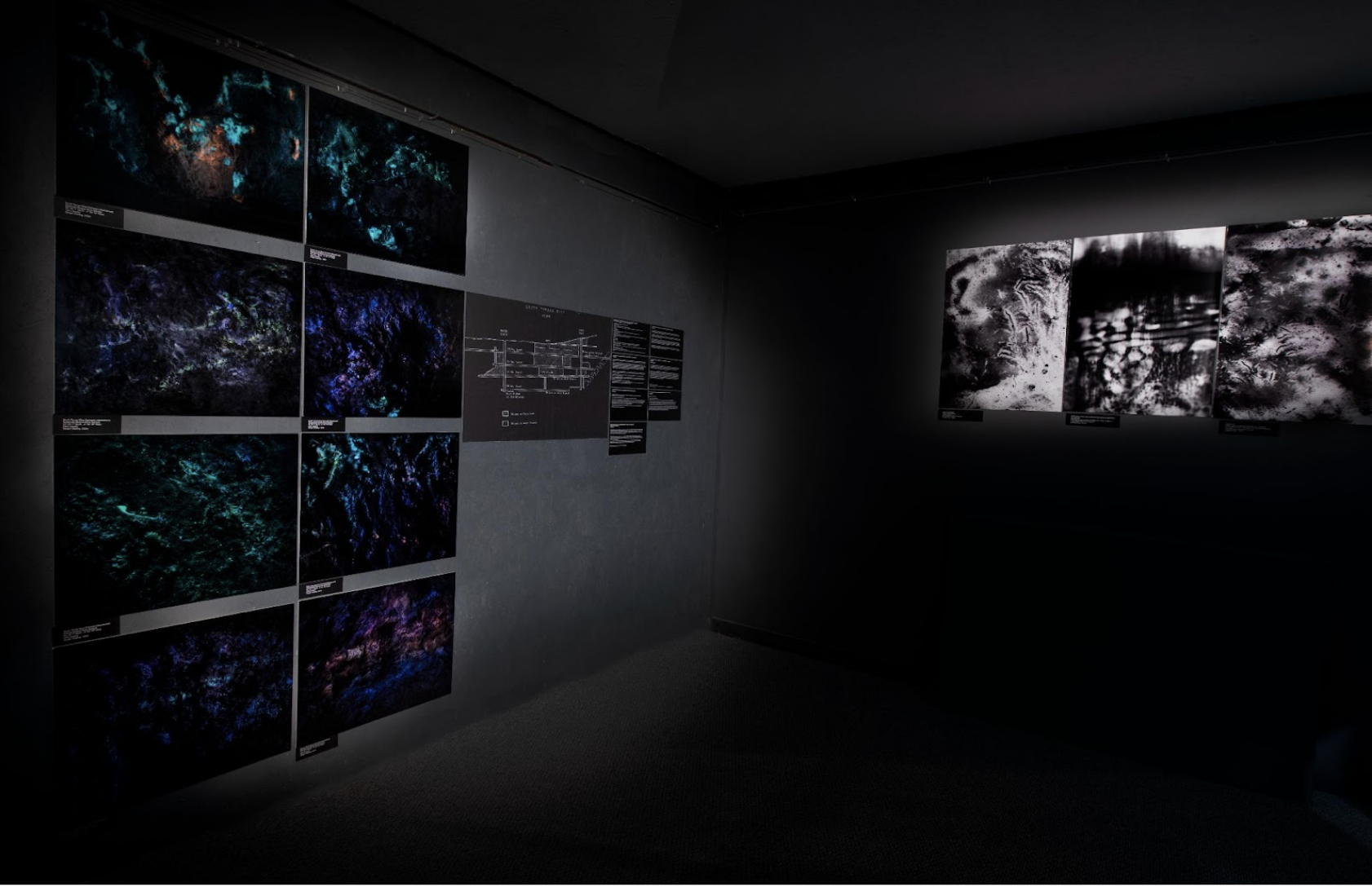
©Jamie House, Exhibition view (at Leadworks CIC Plymouth Devon UK) of the project showing archival mine maps,field study notes and alternative photographic processes, Rn86 Radiological Spectres: Speculative Field Studies in the Mines of South Terras SSSI, 2022
SK: You are performing tasks that allow you to connect with other earthly materials, but you also want your audience to interact similarly with your outcome. Can you talk about the importance of presentation in your work?
JH: I attempt to embrace the transformative potential of art as a way of thinking and acting with the world rather than merely representing or re-presenting it, allowing art to become a process of becoming with, implying a deep engagement and interconnectedness with the environment.How people experience my work in often non-dedicated public spaces outside of institutionalized white cube galleries is incredibly important.
The materials and modes of presentation I use depend on the research methodology and the characteristics of the site I am investigating. For example, I produced a long-form project at a site of a historical landfill site (where waste was buried in plastic sheets that leaked contaminants into the soil over time; climate change and sea-level rise are increasing the likelihood that these historic landfills will erode, leading to these solid waste materials, and their contaminants, being released into the environment). I spent months looking at geological maps, environmental reports, parish council documents, and so on. This was all presented as an immersive installation and the culmination of a ten day residency at Sprites Arts Space Plymouth, UK. Focusing on the soil as a living entity vital for all biotic life, my research drew people into microscopic subterranean worlds by transforming the space with sound, scent, and subdued light (some visitors even said it made them feel like a worm crawling underground).
People were invited to enter darkness, take their shoes and socks off, feel mud between their toes, and feel the vibrations of the complex and deep soundscape (which recorded a range of life-moving and anthropogenic noise). Along with the smell of geosmin, their senses magnified their experience. This project was developed from detailed field research at the Landfill site; my work paid attention to soil and its disastrous degradation from anthropogenic pressures. My work pushed the thresholds of what is depicted and how through alternative ecological photographic processes. Stepping away from representational language to work with and alongside material processes, this work brings questions of ethical ways of working and thinking to the fore. It inspires how I worked with the soil and materiality of the site at South Terras.
Detailed multisensory outcomes of this project in the form of videos and soundscapes can be found here on Jamie website: https://www.jamiehouse.co.uk/zn-2-beneath-within#1
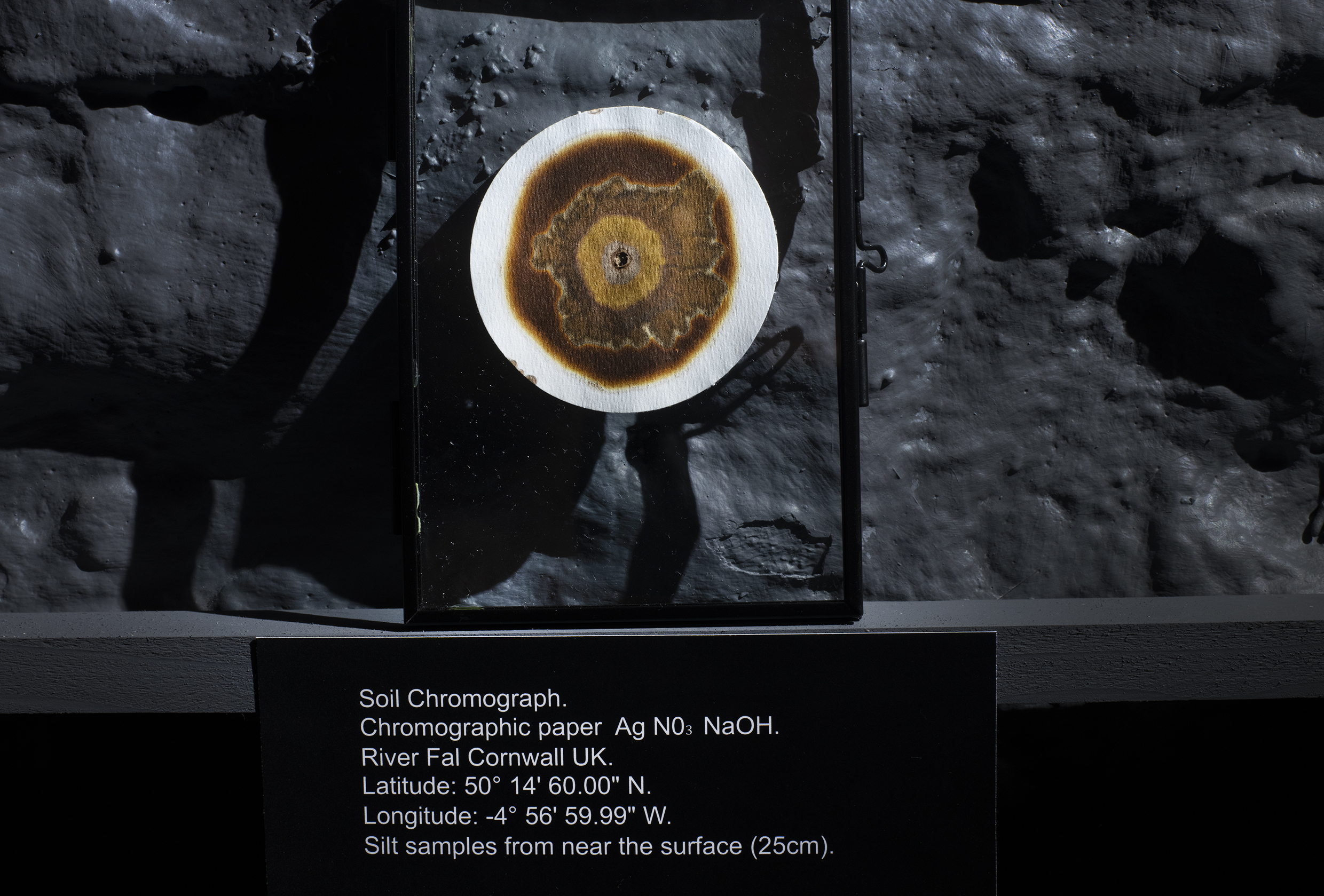
©Jamie House, Exhibition detail showing soil chromograph, Rn86 Radiological Spectres: Speculative Field Studies in the Mines of South Terras SSSI, 2022
By making organic processes large-scale and tactile, I invite others to engage with materiality and phenomena that are otherwise beyond our usual sensory field. In my projects, the language of non-Western scientific research is hinted at through soil chromatographs, a photographic process that indicates the earth’s chemical, physical, and biological characteristics. Utilized by farmers, the hues, patterns, and textures provide an overview of each soil’s vitality and health and the display of Petri dishes containing ‘images’ on scoby substrates, which were living organic matter from the site. My expanded photographic practice often includes multi-sensory engagement, which privileges listening, touch, and the olfactory. Including the smell of geosmin and the invitation to walk barefoot on the soil from the landfill site, perspective shifts of scale and time from close-up to distance, and from the microscopic to the vast in layers of content and meaning for visitors to explore.
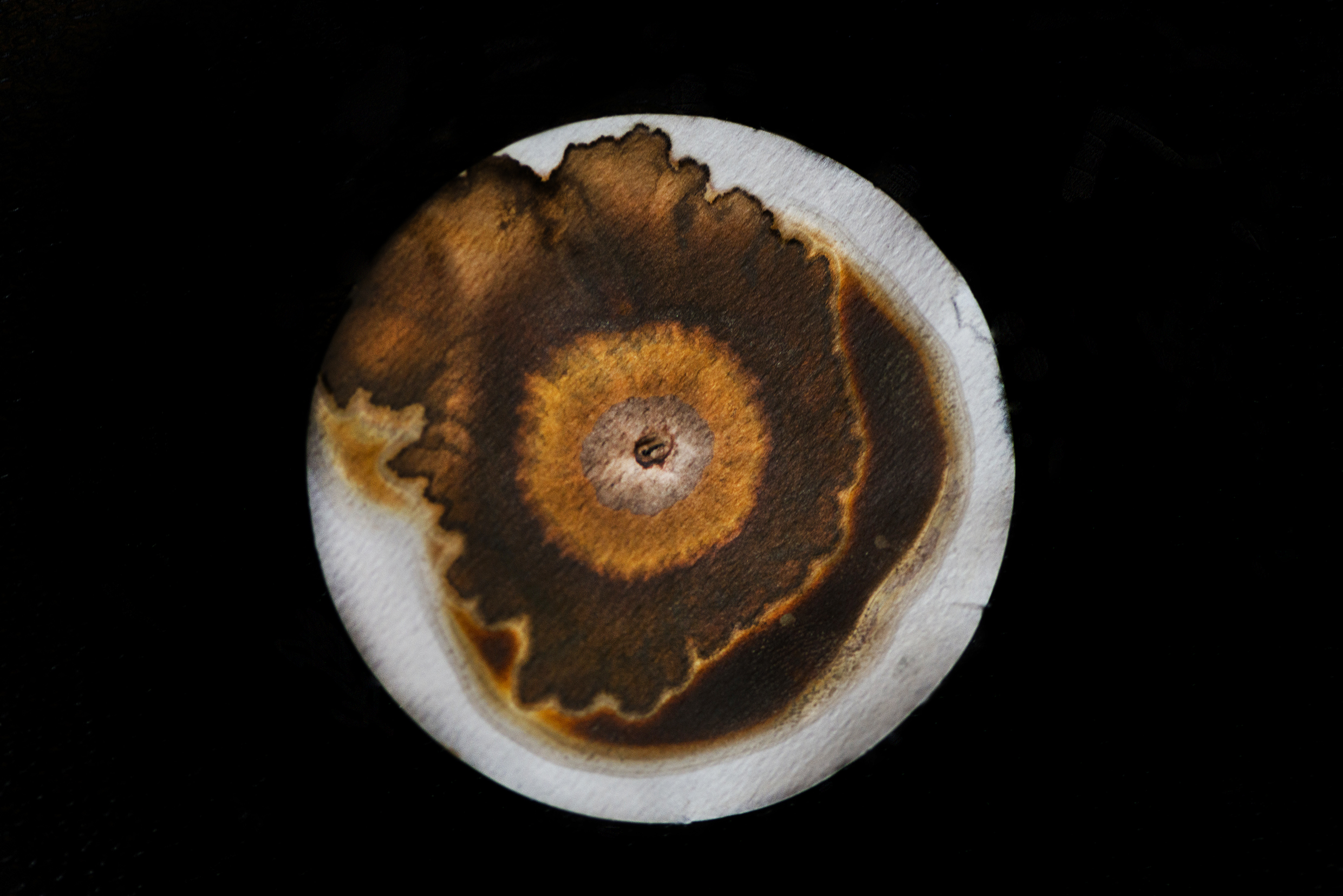
©Jamie House, soil chromograph (a qualitative non-western chemical test method for visually assessing soil health embedding the soil directly on chromographic paper.By a slow process of capillary action the colours and patterns bleed into the specialist paper in concentric rings providing a pictorially rich language that can be read, allowing a focus on soil care practices, and explores how our current (limited) capacities of digital sensing can be opened up. Rn86 Radiological Spectres: Speculative Field Studies in the Mines of South Terras SSSI, 2022
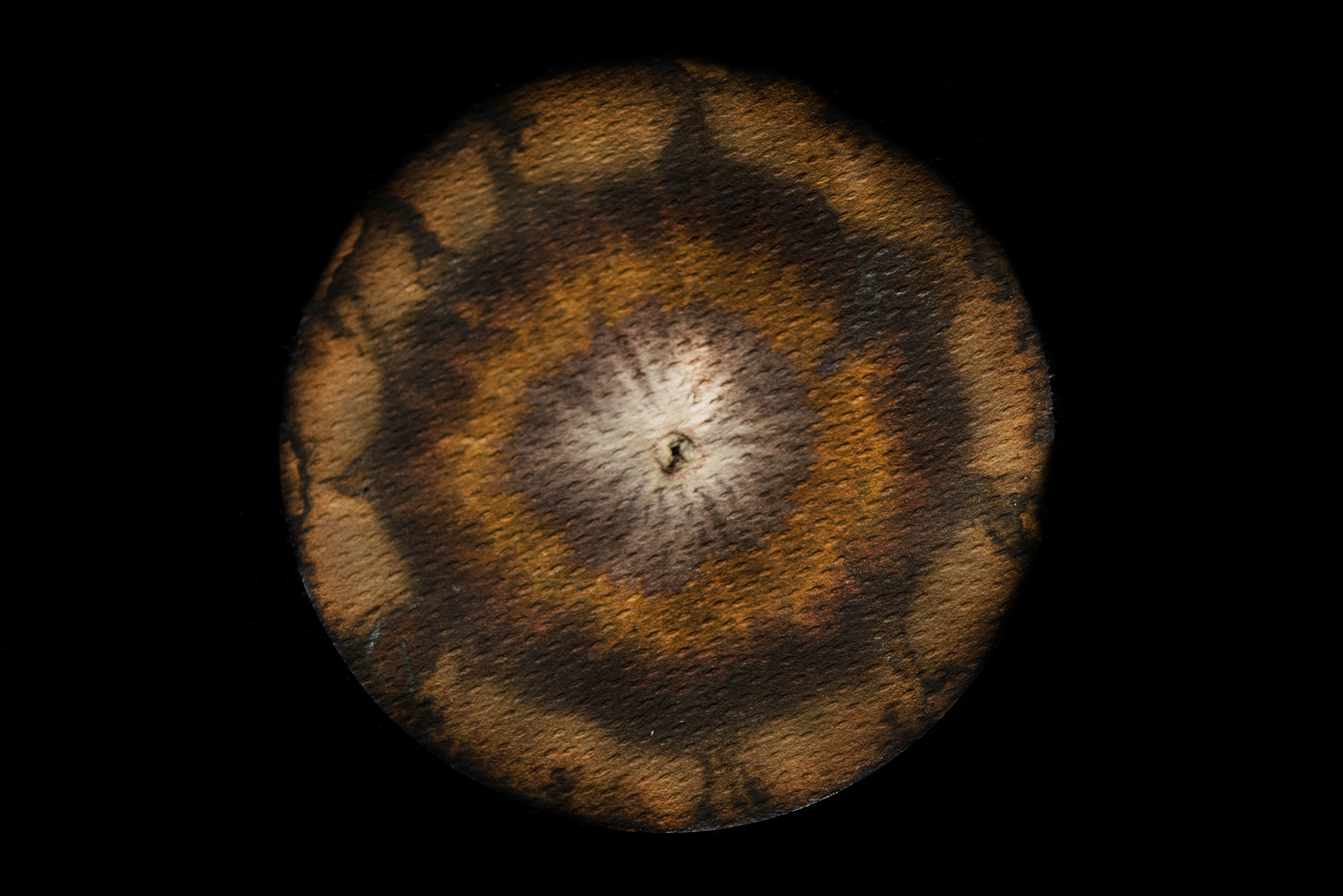
©Jamie House, soil chromograph, Rn86 Radiological Spectres: Speculative Field Studies in the Mines of South Terras SSSI, 2022
SK: How do you define the relationship between art and science in your work? Do the roles change between different pieces or series of work?
JH: The relationship between art and science in my practice is characterized by collaboration (working with and alongside the world and its processes), sensory integration, methodological flexibility, exploration of boundaries, and constant evolving iterations. The roles of each discipline may vary across different pieces or series of work, reflecting the adaptability and responsiveness inherent in my interdisciplinary approach. I borrow from the tools of empirical science field studies that are adapted into speculative field studies. Using visual motifs and methodologies of science, my outcomes are speculative, not absolute, and iterative rather than empirical, full of holes asking more questions than answers.
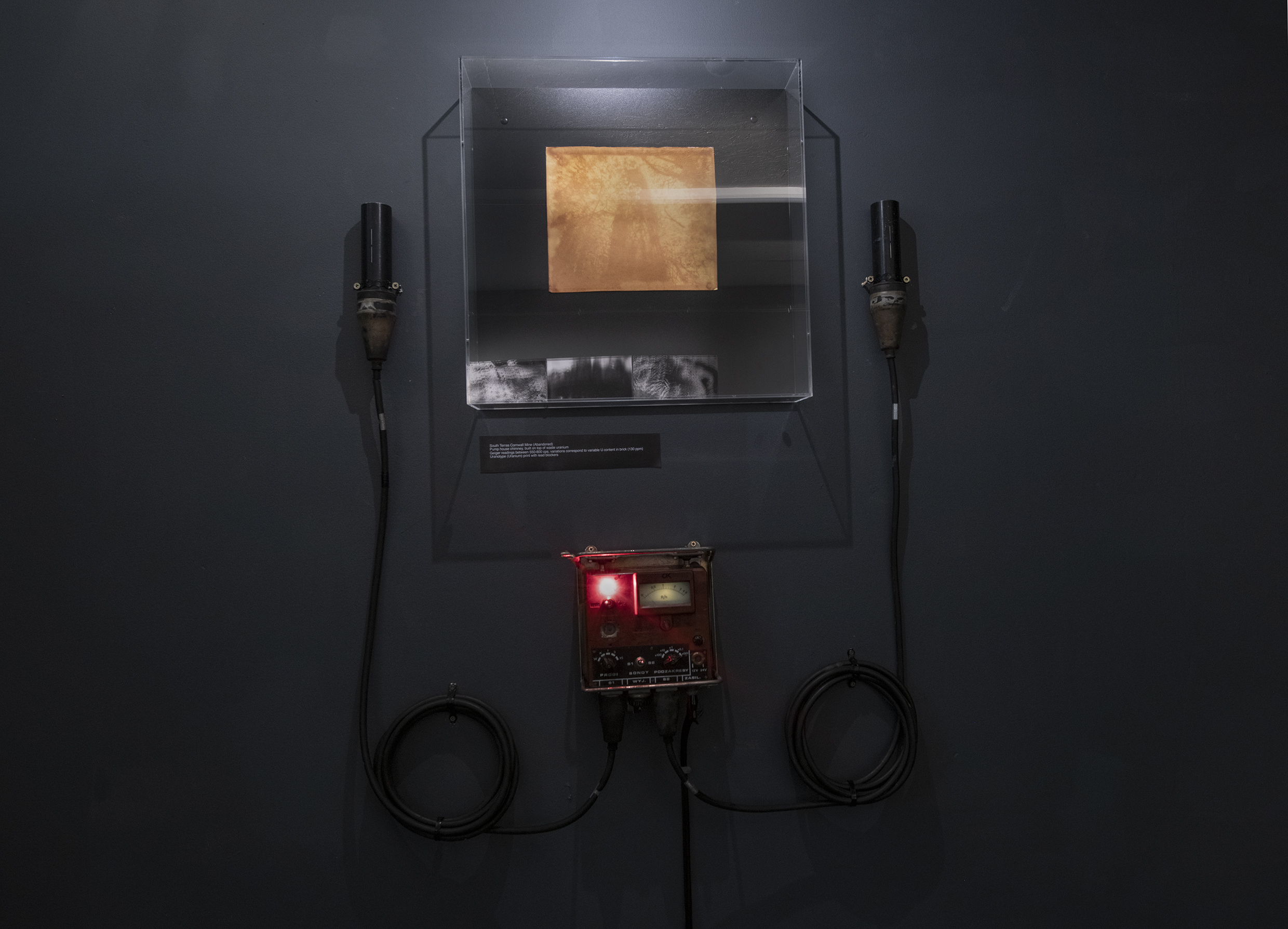
©Jamie House, Rn86 Radiological Spectres: Speculative Field Studies in the Mines of South Terras SSSI, 2022 .Mixed media installation showing uranotype (print made with uranium) housed in a plexiglass case with lead blockers,below pictured is a geiger counter with two probes one measuring the radiation of the print and one measuring the background radiation in the exhibition space.
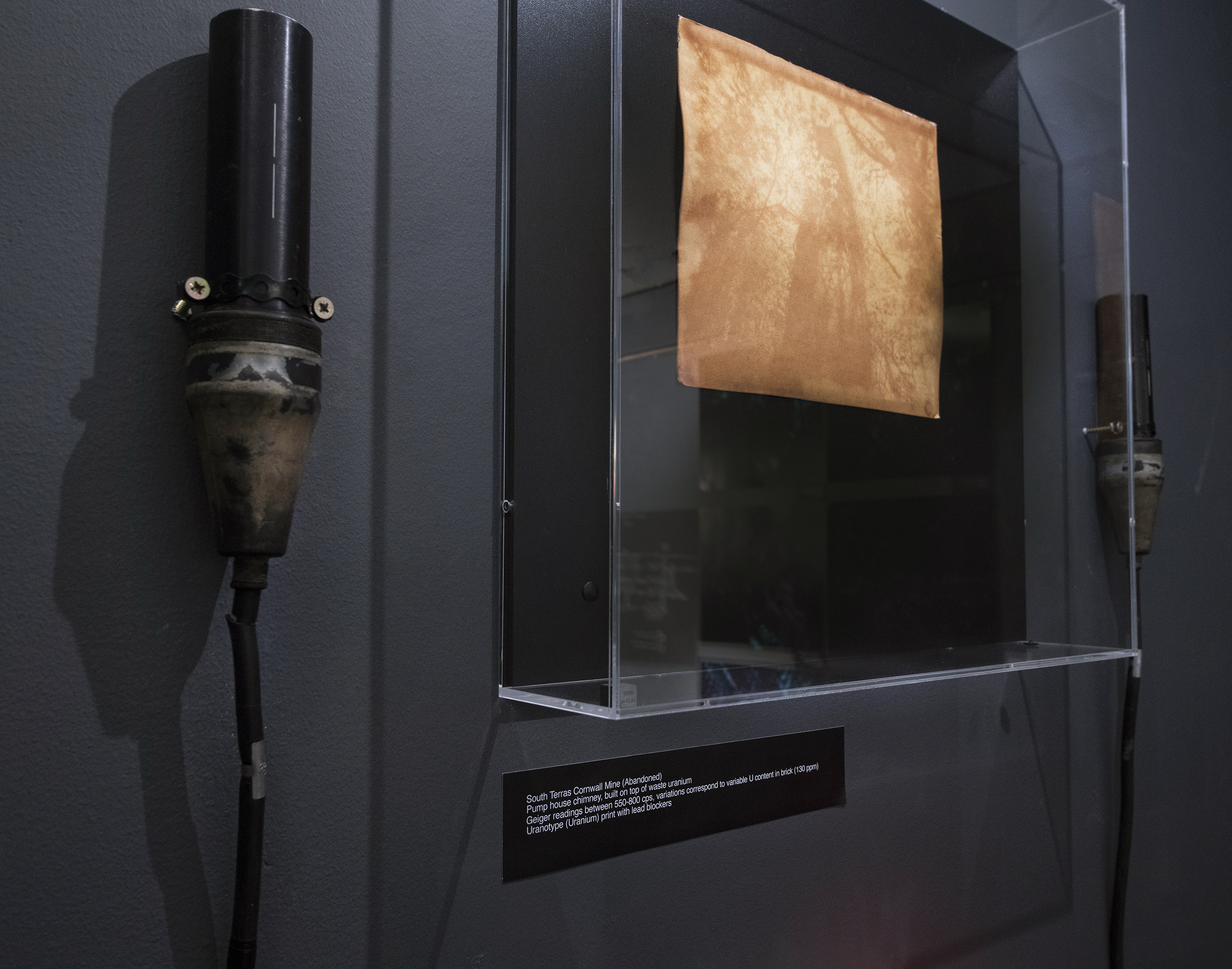
©Jamie House, Mixed media installation, Rn86 Radiological Spectres: Speculative Field Studies in the Mines of South Terras SSSI, 2022
SK: What would you like people to take away from this work?
JH: We are not separate as humans; we are part of this messy, leaky world of organisms, bacteria, mud, the human microbiome, and the electrome, all entangled and implicated . I believe it is everyone’s planetary responsibility to care for and contribute to an eroding world in the era of the Anthropocene.
I am inspired by the rich and innovative ideas of Karen Barad, who has much to offer regarding environmental thought and art. I like considering Barad’s ecological care and response-ability theories in my work. At this time of challenging planetary imperatives, environmental education is increasingly essential. I believe connectedness, and Barad’s theory of agential realism provides a way to articulate and engage with connectedness as inherent within the world rather than something we need to create.
This shift in perspective supports many new materialist theories and thinking, which allow a further break from material-discursive dualistic thought. This material turn within photography enables an investigation into the co-constructing material-discursive nature of the medium to create new relations and possibilities in the world.
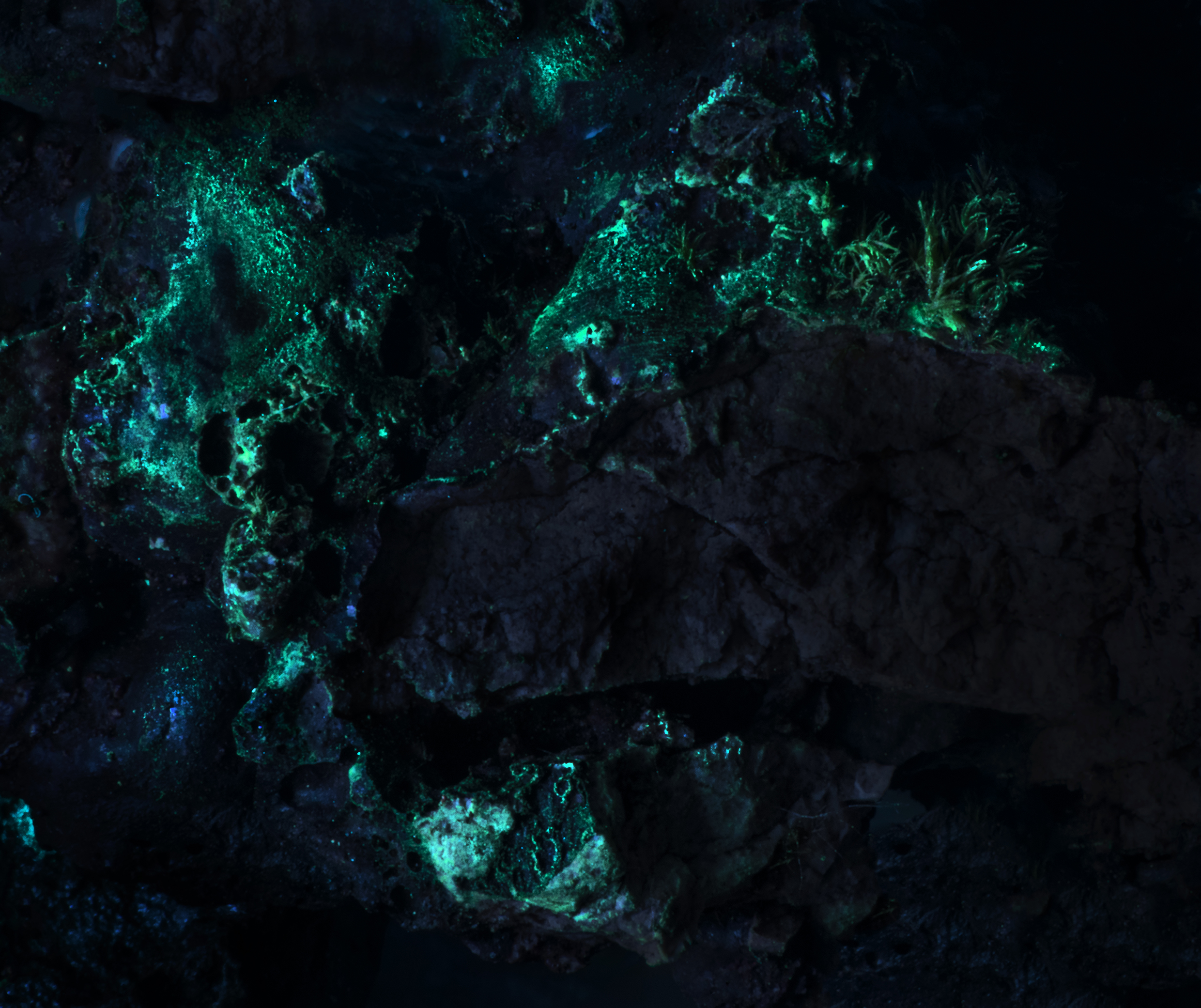
© Jamie House, Rock fluorescing with radiation at South Terras taken with a UV torch at night, Rn86 Radiological Spectres: Speculative Field Studies in the Mines of South Terras SSSI, 2022
Jamie combines art practice with photography and extended listening practices to enable non-anthropocentric readings of post-industrial sites. His experimental practice research methods include multi-sensory technological methods of observation, employing VHF scanners, radio waves, Geiger counters, and textual responses.
Jamie House is a multi-award-winning artist-researcher and module leader for activist practices MA photography at University of Plymouth UK. Has presented his work at International and National symposia and has exhibited and published widely, including most recently:
Delivered peer reviewed academic paper at the International Association of Photography and Theory (IAPT) Cyprus.
Talk at ARE (Art, Resilience (research), Economy) international research group.
Forthcoming book on Speculative Field studies at Goonhilly Earth Station SSSI Cornwall.
Forthcoming Exhibition PS1 Gallery University for the Arts Plymouth.
Talk at Memory, Site & Artefact research group University for the Arts Plymouth.
Speaker at Test Space: Expositions of practice-led Research Symposium CAST, Helston.
Phytogenesis II: Provocations of Plants, Philosophy, and Photography. International Symposium, University of Plymouth, North East Photography Collective, Newcastle University.
The Northern Eye International Photography speaker alongside Alys Tomlison, Craig Easton, and Charlie Knight.
Nocturnal Field studies academic paper, University of Plymouth Doctoral College.
You can find more of Jamie’s work on Vimeo,Soundcloud and on his website, www.jamiehouse.co.uk.
Follow him on Instagram: j_aime_h or on other sites: https://vimeo.com/jamiehouse, & https://soundcloud.com/jamiehouse.
Sarah Knobel is an artist captivated by the concept of commodities and their existence beyond mere utility. Through her evocative imagery, she crafts liminal spaces, inviting viewers to contemplate the enigmatic nature of everyday objects and our waste. Her work seamlessly weaves together optimism and hostility, beauty and repulsion, exploring the collision between the natural world and opposing forces.
You can find more of Sarah’s work at, www.sarahknobel.com, and follow Sarah Knobel on Instagram at @sknobel.
Posts on Lenscratch may not be reproduced without the permission of the Lenscratch staff and the photographer.
Recommended
-
Aaron Rothman: The SierraDecember 18th, 2025
-
Gadisse Lee: Self-PortraitsDecember 16th, 2025
-
Scott Offen: GraceDecember 12th, 2025
-
Izabella Demavlys: Without A Face | Richards Family PrizeDecember 11th, 2025
-
2025 What I’m Thankful For Exhibition: Part 2November 27th, 2025

